Windows, Thermal Bridges, & Other RV Hot Spots
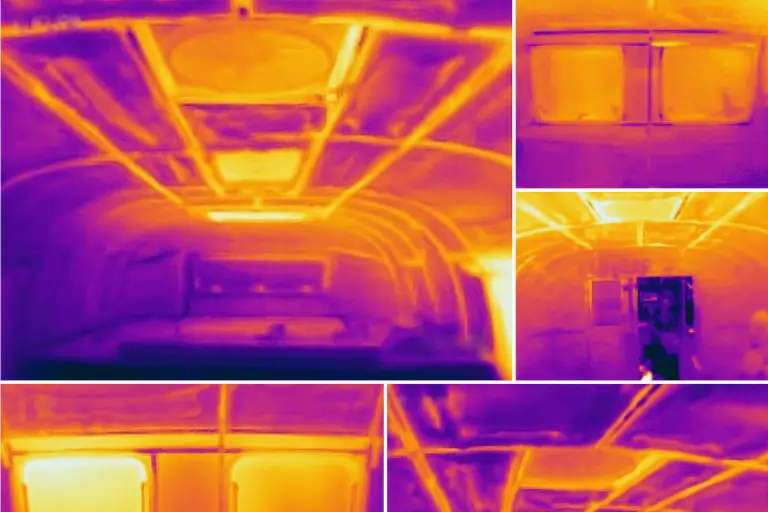
We have a thermal camera, and we know how to use it: identify our top hot spots where the summer heat is turning our home on wheels into a sauna.
While our 1970 Avion C11 truck camper is in fantastic shape, we still have a lot of exterior work to seal up leaks and upgrade windows and other appliances. We learn a lot about riveting, sealing, and the structural design of the Avion as we rework this half-century-old vintage camper to make it through another 50 years.
[mkdf_button size=”” type=”outline” text=”Learn More” custom_class=”” icon_pack=”font_awesome” fa_icon=”” link=”https://roamlab.com/diy/exterior/” target=”_self” color=”” hover_color=”” background_color=”” hover_background_color=”” border_color=”” hover_border_color=”” font_size=”” font_weight=”” margin=”0 0 32px 0″]

We have a thermal camera, and we know how to use it: identify our top hot spots where the summer heat is turning our home on wheels into a sauna.
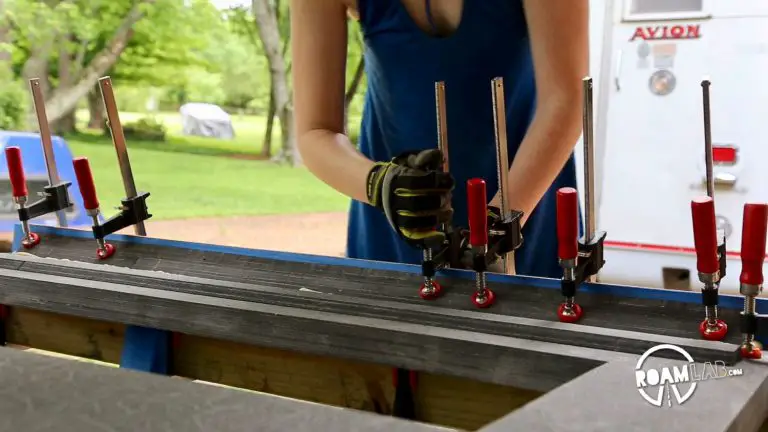
This has been a long time in the making. When we bought our Avion C11 truck camper, we knew that the full bed aligned east-west would not work for our full time intent. Initially, we struggled to conceive of a method to form a queen sized bed simply by altering the interior arrangement of the camper. While we could introduce sliding or folding out bed extensions, we could not agree on a solution that wouldn't require us to regularly make and break down a bed or block the interior windows. And so, we reluctantly agreed, we would be extending the cabover.

We revisit our truck camper floor with biaxial 1708 fiberglass mat and fiberglass fabric to reinforce the floor and cut back on creaking.
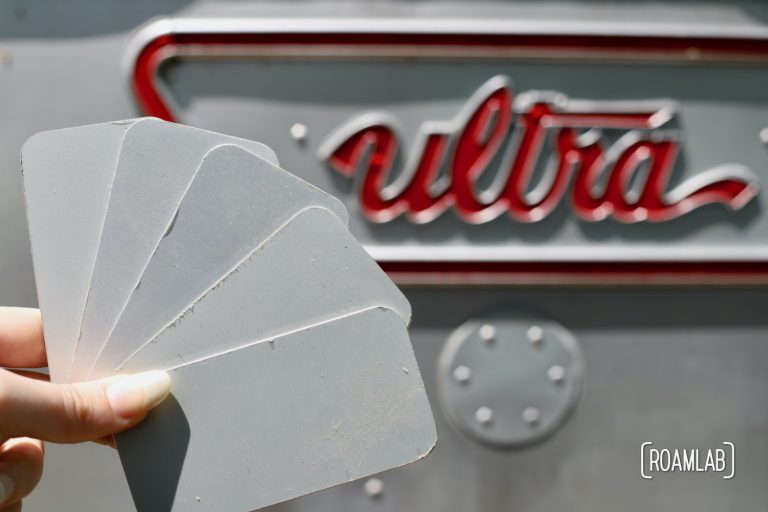
Learn how to source aluminum sheet for patching and repairing a vintage Avion camper. Understand alloy, anodization, thickness, and dimensions.
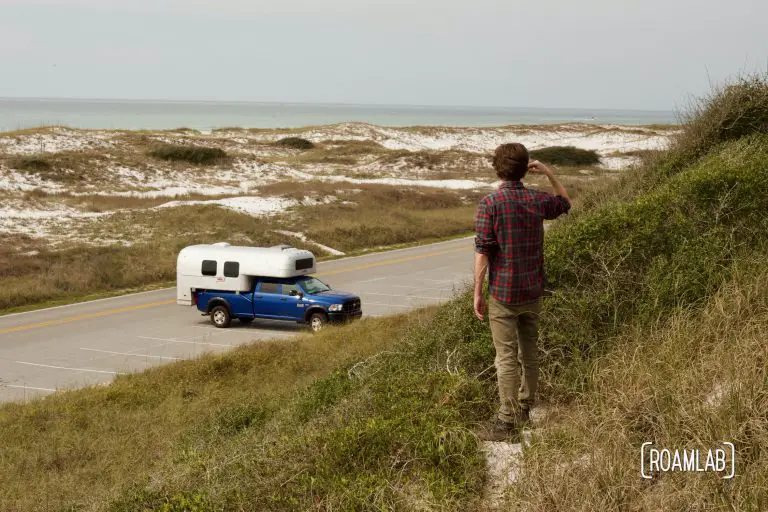
A lot of the detail work on Avion truck campers is top notch. But windows have come a long way since 1970. After extensive work resealing and reenforcing many of our camper's seams, one of the few remaining leak points is the windows. The current windows along the body are split into two panes. The larger top pane does not open. An understandable choice given that the surface these windows are built on is curved. Framing out a curved window pain and frame that opens and is fit for weather and highway durability would be a huge challenge. So, only the lower pain opens. It is a section just low enough for the pain to be flat. But this also means it is a very small opening: just enough for a little venting.
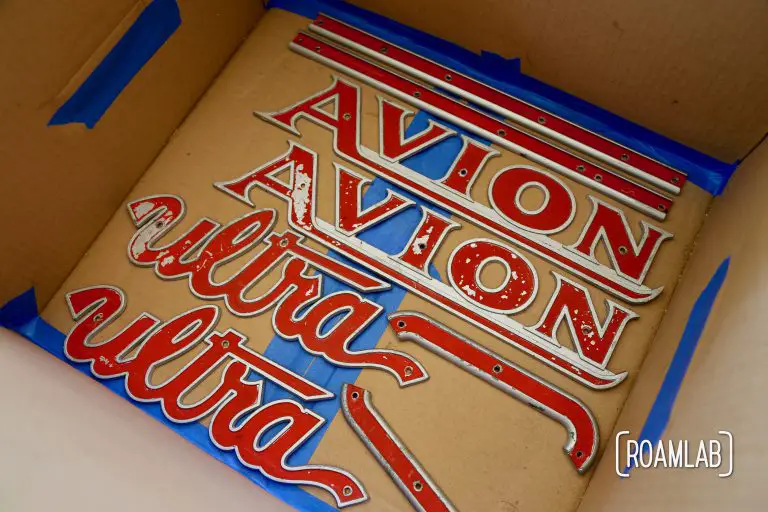
Any owner of a vintage camper likely knows the feeling: you have a beautiful, clean piece of automotive history that looks dirty and drab because of some chipped and sun-faded decals. Most manufacturers decorated their camper exteriors with brightly colored metal emblems featuring brand names and model types. The problem is, bright colors such as red are the first to fade. And, after a half century in the sun, it is time to repaint the decals.

The cabover windows have been a source of much angst among the Roam Lab crew. It’s one of the most visible windows. It also leaks. While we are reticent to change the exterior appearance of the camper, this is our most notable deviation. We first looked for two small windows to match the original set. But eventually decided to update the look with one, long futuristic window.
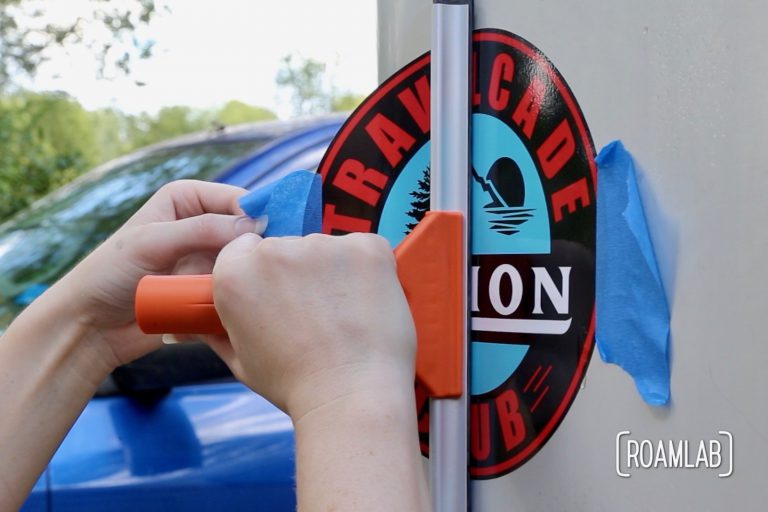
Like most classic campers, our Avion truck camper came with many stickers to mark its identity and affiliation. One of the classic stickers is for the Avion Travelcade Club. While the club is long gone, the sticker is a piece of history - faded, peeling history. So, we decide it is time to replace the old sticker with a new, vinyl reproduction.
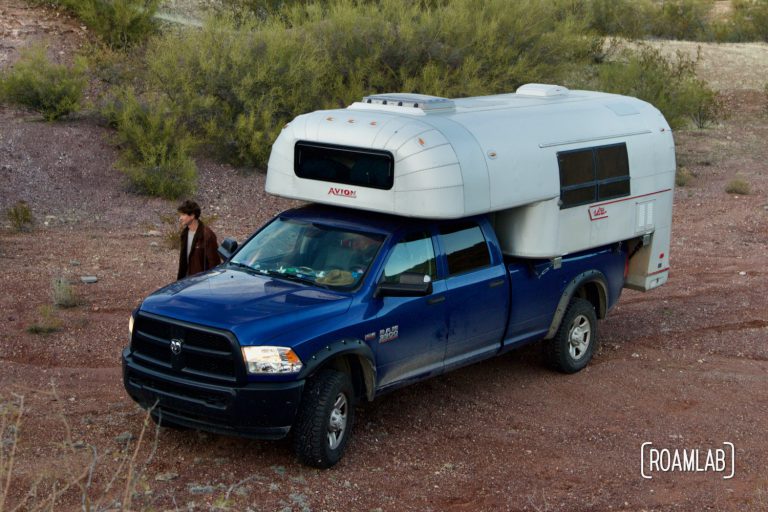
We get the air flowing in our truck camper by installing a MaxxAir fan. Check out our continuing roof renovation work.
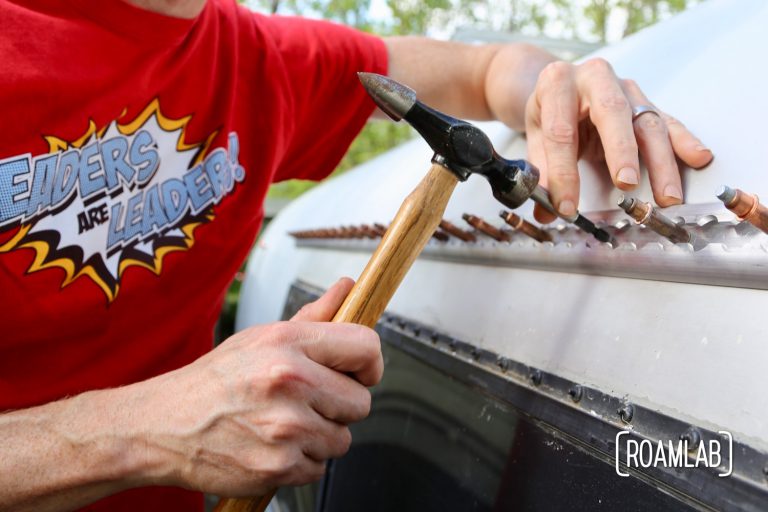
The sky is the limit with a modular rail system. To get there, though, this DIY truck camper renovation project involves tight spaces and hand riveting.